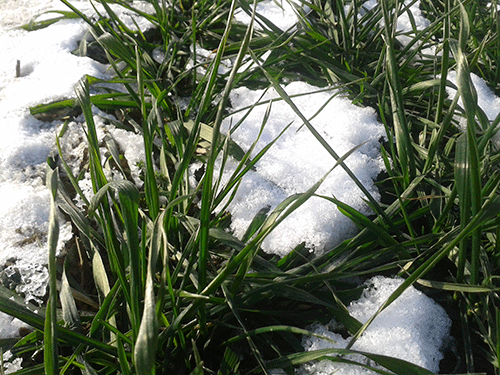How does winter weather affect the winter wheat crop?

Last week, we covered how Canadian wheat can benefit from a hot summer. Like Canadian humans do, wheat also has to wait through a long and cold winter first.
You probably saw some fields being planted in the late fall, after soybeans were harvested. These fields most likely were being planted with winter wheat. Winter wheat must be exposed to some cold weather in order to be able to produce a wheat head with kernels–this process is called vernalization. To a point, cold weather is good for winter wheat. However, too much cold weather can cause trouble, especially without snow cover.
Winter wheat is fairly winter hardy (unlike some of us who might be reading this post), but with too much cold it can have vigour issues in the spring. Snow on top can help create a “blanket” for the wheat which can help it survive cold temperature swings. However, if the blanket is too deep or is packed down, it can smother the wheat or cause mold growth. An ideal winter for winter wheat would have moderate snow, moderate cold and no ice formation.
That sounds like an ideal winter for bloggers, too.
